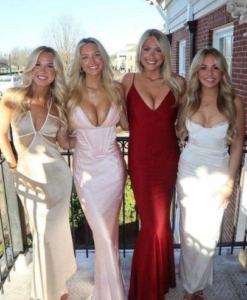Beauty is a concept that varies widely across cultures, yet remains a deeply universal part of the human experience. In America, beauty is often influenced by mainstream media, fashion, and entertainment, but it also faces challenges from evolving social movements that aim to redefine conventional beauty standards. Globally, beauty is shaped by a variety of factors, including tradition, geography, and cultural beliefs, each presenting a unique perspective.
In the United States, beauty ideals are largely dictated by the entertainment industry, fashion, and social media. Hollywood, as the epicenter of American entertainment, has long been a driving force behind what is considered beautiful. For decades, the standard for women has been thinness, clear skin, and symmetrical features—think of iconic figures like Marilyn Monroe, the supermodels of the ’90s, or modern-day influencers like Kim Kardashian and Beyoncé, who represent a more inclusive yet still highly curated notion of beauty. For men, a chiseled physique and well-groomed appearance are often viewed as attractive, with famous athletes or actors like Chris Hemsworth or The Rock embodying this ideal.
However, American beauty ideals are slowly shifting. The rise of social movements like body positivity and fat acceptance has challenged the notion that beauty is synonymous with a certain body type. Social media platforms, especially Instagram, have empowered individuals from all walks of life to showcase diverse beauty, ranging from different body sizes to varying skin tones and unique features. The mainstreaming of natural hair, non-binary gender expression, and more fluid beauty standards have begun to disrupt the traditional view of what is “beautiful.” Yet, the pervasive influence of advertising and cosmetic industries still promotes idealized beauty that many feel is unattainable.
Globally, beauty standards differ significantly. In many parts of Africa, beauty often revolves around features such as fuller figures, natural hair, and darker skin, contrary to the Western preference for light skin and slender bodies. This is reflected in the rising global visibility of African-American models, entertainers, and activists, who challenge the dominance of Eurocentric beauty standards. Meanwhile, in countries like Japan and South Korea, the emphasis is often placed on youthful appearances and fair skin. In South Korea, for instance, the beauty industry is massive, with skincare routines and cosmetic products forming an essential part of daily life. K-pop idols set beauty standards that emphasize porcelain skin, delicate facial features, and a fresh, youthful look, which has also gained popularity in parts of Southeast Asia and beyond.
In some Middle Eastern cultures, beauty is often seen through the lens of modesty and elegance, with women traditionally embracing full-body garments like the hijab. Makeup and jewelry are commonly used to enhance one’s appearance within this context, with emphasis on sharp, defined eyes and flawless skin. At the same time, these cultures also place value on age, wisdom, and the natural beauty of aging, contrasting with the American obsession with youth.
Latin American beauty ideals often highlight curvaceous bodies, full lips, and tanned skin, a stark contrast to the Western emphasis on thinness. Celebrities like Shakira or Sofia Vergara exemplify these features, which are widely admired across the region. Beauty pageants, like Miss Universe, often represent a microcosm of how various countries interpret beauty. Some places, like Brazil, emphasize physical appearance and grooming, while others, like India, focus on traditional attributes of grace and femininity.
Despite the diversity of beauty standards across cultures, a common thread unites them: beauty is inextricably linked to societal values, individual identity, and personal expression. What is considered beautiful is continually changing, and while Western beauty standards still dominate much of global media, there is a growing recognition of diverse, authentic beauty that transcends borders. Beauty, after all, is not only what we see but also how we feel about ourselves and others.

